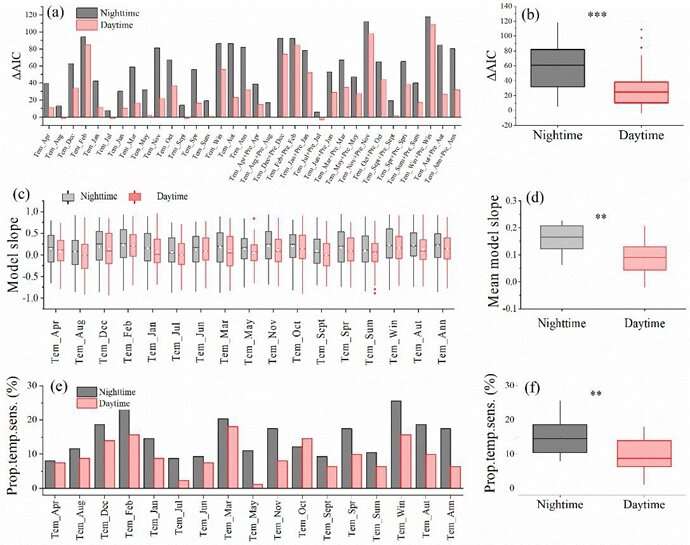Asymmetric effects of daytime and nighttime warming in alpine treeline recruitment

The upper range limits of tree species are extremely sensitive to climate change, and global climate warming has already had profound effects on the recruitment dynamics of alpine treelines worldwide. Previous studies have only considered the effects of daily mean temperature increases on alpine treeline recruitment, without considering of the asymmetric effects of daytime and nighttime warming.
In an effort to identify the differential effects of daytime and nighttime warming on treeline recruitment, researchers from the Wuhan Botanical Garden of the Chinese Academy of Sciences synthesized the time series of tree recruitment in alpine treelines after 1900 from 172 treeline sites across the Northern Hemisphere.
The results indicate that both daytime and nighttime warming have positive effects on treeline recruitment across different regions of the Northern Hemisphere, but their contributions are uneven.
"Such an asymmetric effect of daytime and nighttime warming on treeline recruitment could be attributed to the occurrence of drought stress, which is mainly caused by daytime warming rather than by nighttime warming," explains Dang Haishan, Professor at Wuhan Botanical Garden. The study results have been published in Global Change Biology.
This study shows that nighttime warming rather than daytime warming plays a much more important role in promoting the recruitment in alpine treelines, which further deepens the understanding of the impacts of the ongoing climate warming on mountain ecosystems.
More information: Hang Shi et al, Asymmetric effects of daytime and nighttime warming on alpine treeline recruitment, Global Change Biology (2023).
Journal information: Global Change Biology
Provided by Chinese Academy of Sciences




















